Blue Nile Watershed Challenges
Nile River Basin
|
NEW ESRI StoryMaps: What's On Our Shelves & NWNL Song Library & No Water No Life ESRI |
Nile River Basin
Semu Moges Moges
Dean of Graduate Students, at Water Technology Institute
Alison M. Jones
NWNL Director and Photographer
All images © Alison M. Jones. All rights reserved.
After a NWNL Omo River Expedition in Ethiopia, Alison Jones visited Arba Minch 1) to interview Water Technology Institute [WTI] scientists focused on Ethiopia’s water resources and hydrologic projects; and to discuss her 100-page Proposed Management Plan for Nech Sar National Park with the current manager of that park. (The Plan is online as 16 MB PDF — or 4 MB PDF).
Dean Moges, from Addis Ababa University in Arba Minch, very helpfully explained hydrologic issues in Ethiopia’s two NWNL case study watersheds: the Blue Nile River Basin in central and western Ethiopia; and the Omo River Basin in south-western Ethiopia. Following this interview, Dean Moges also spoke of the Gibe Dams in the Omo River Basin in a WTI interview with Dean Sine and NWNL.
NWNL Dr. Moges, thank you for meeting with me. Please introduce yourself before we discuss your thoughts about the Blue Nile River Basin.
SEMU MOGES I am Dean of the School of Graduate studies at the Addis Ababa University at Arba Minch. My specialization is hydrology and water resource management. I’m also the National Coordinator for Operating Studies at the Nile Basin Initiative. [Editor’s Note: The Nile Basin Initiative is a recent initiatives involving the nine countries politically involved in water rights of the Nile River Basin.]
NWNL Let’s begin by discussing Ethiopia’s role in the Nile Basin.
SEMU MOGES Being part of the Nile Basin Initiative, my hope is that its member countries will somehow create an understanding and trust between themselves regarding their intertwined watershed issues. Ethiopia’s Blue Nile River is the highest contributor of the volume of the Nile in Sudan and Egypt. In fact, almost 85% of the Nile’s total water volume comes from Ethiopia.
Another part of this transboundary situation is that while Ethiopia is only using less than 2 or 3% of the Nile’s water supply, we have the acute shortage of food. Much of our population is concentrated in the Blue Nile River Basin part of the Ethiopia, particularly in its highlands. Therefore, the Ethiopian government is trying to push development of its Blue Nile water resource. The existing situation in Ethiopia is favorable for the government to now create water projects along its Blue Nile River.
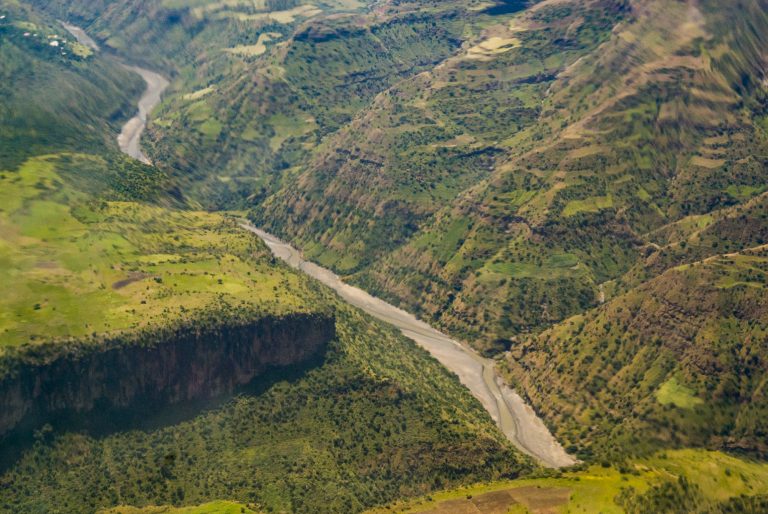
NWNL Given those values of Ethiopia’s Blue Nile River, what challenges do you face within its Basin?
SEMU MOGES One environmental problem in the Blue Nile Basin is the critical degradation of soil in most of its catchments and sub-basins. This is easily substantiated by the enormous amount of erosion. High degrees of sediment are recorded at theSudanese border and so they know obviously that there is a degradation from this part of the country.
Our erosion issues create a lack of water which then creates a shortage of food. As well, Ethiopia struggles with land and water degradation due to deforestation, population rise and abject poverty.
NWNL What is the rise in population in Ethiopia and the Blue Nile River Basin today?
SEMU MOGES In general, in Ethiopia, we witness an annual increase of 2.5 million people, which is a 2.9% increase in our population. So, imagine with more than 2.5 million people coming into this part of the world annually, we expect that in 8 years, Ethiopia’s population will exceed a 100 million people. That would make us the 2nd most-highly-populated country in Africa, and the 10th most-highly-populated country in the world. [Editor’s Note: Twelve years later, in 2020, Ethiopia was the 11th and Egypt was the 14th most populated country in the world.1]
1https://www.worldometers.info/world-population/populationbyccountry/
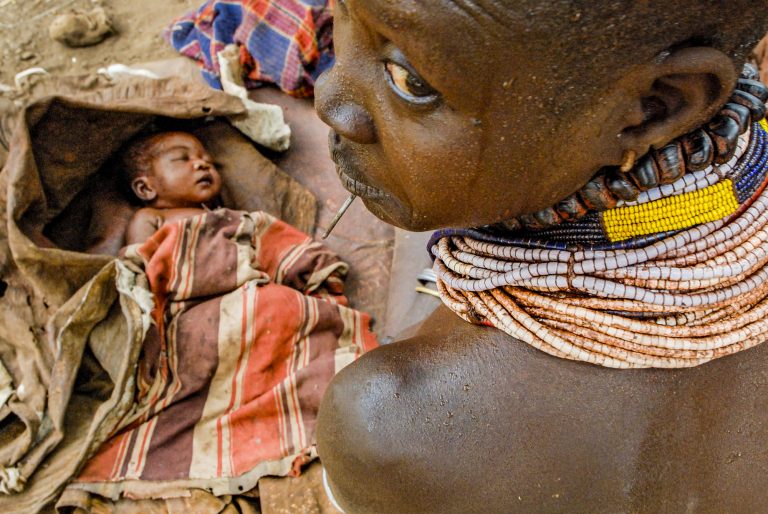
NWNL What issues does the Blue Nile River Basin have regarding sanitation and drinking water? When I was there in October, I saw many billboard signs urging people to use toilets and not defecate outside.
SEMU MOGES Yes, in any Environment Assessment from bank reports or national reports, you can see the sanitation problem in the Blue Nile River Basin is the same as at the national level. Sanitation infrastructure is provided to less than 10% of the Blue Nile region’s population.
NWNL That’s true of all of Ethiopia as well?
SEMU MOGES Yes, it is all is mostly at par with national level.
NWNL What about sanitation in the Omo River Basin in southwest Ethiopia, which is another NWNL case study watershed?
SEMU MOGES I cannot tell you exactly, but I think the Omo could be worse. The difference between Omo and the Blue Nile watersheds is that the Blue Nile area of Ethiopia is highly populated and very settled. There they have been practicing agriculture for the last maybe 3,000 years.
The Omo population is also rising; and as you have seen, most of their 6,000-year-old lifestyle is that of a distinctively native culture, not mixed with highland cultures. They have ample land; and they don’t really worry about sanitation. They can use water from the rivers.
However, different from the lowland part of the Omo, the Omo highlands are similar to the Blue Nile watershed. They are populated with those who grow high-elevation coffee which is cash crop. As well, hydropower development and water-storage facilities exist within the upper part of Omo.

NWNL Back to Ethiopia in general, what do you see as its three biggest problems what are potential solution to each of those? I ask this, realizing that your Water Technology Institute exists to establish a mass of scientists and researchers who can come up with such answers.
SEMU MOGES I think one of Ethiopia’s biggest challenges is that 90% of our water flows out of the country. Ethiopia is like inverted boat. Water gushing down and out of the country forces us to create some kind of water-resource agreements with other countries. Therefore, this transboundary nature of our rivers brings up the fact that downstream countries [Sudan, Egypt and Kenya] were helped by colonial settlement and efforts in the old days to establish their agriculture long before Ethiopia started to do so.
NWNL How do transboundary arrangements come into being; and secondly do they help or hurt Ethiopia?
SEMU MOGES Well, one option could be sitting together to discuss the solutions. We have to trust each other, yet we know there is a big difference in how downstream countries and Ethiopia understand their water resources. Ethiopia’s understanding is that water resource should be treated as a social good, allowing everybody a right to food security, water security, and of course environmental security.
The understanding of the Nile’s lower riparian countries is that water is a commercial resource. That means they have to get water by any means and they have to produce as much as they can. Some nations would export that water. Some nations would use it for their own consumption. But we believe, first of all, the right of each and every person should be respected with terms that ensure the basic human concepts of water and food security.
Water used for services beyond either social requirements or basic needs could be treated as an economic good in which we could invest when it yields a profit. That could happen in Egypt. It could happen in Ethiopia. It could happen in Sudan.
NWNL How far has the Nile Basin Initiative progressed in establishing a Framework of Understanding towards these different approaches and philosophies, as well as towards water resource values? Is there an agreement that basic needs takes precedence over commercial needs?
SEMU MOGES Yes, there is all this lingering disparity – what you could call the “historical hitch” between downstream riparian countries. They say, “We don’t have much rain. You have more rain.” This is the typical “historical hitc” to a new understanding of how we should think of water as a common good for all of us – for humanity.
In fact, water resources are not only just for you and me, or just for Egyptians and Ethiopians. All of humanity should have access to a reasonable amount of water. If we can understand that, then we can negotiate a reasonable amount that is critical for each individual human being. Then the solution becomes very simple.
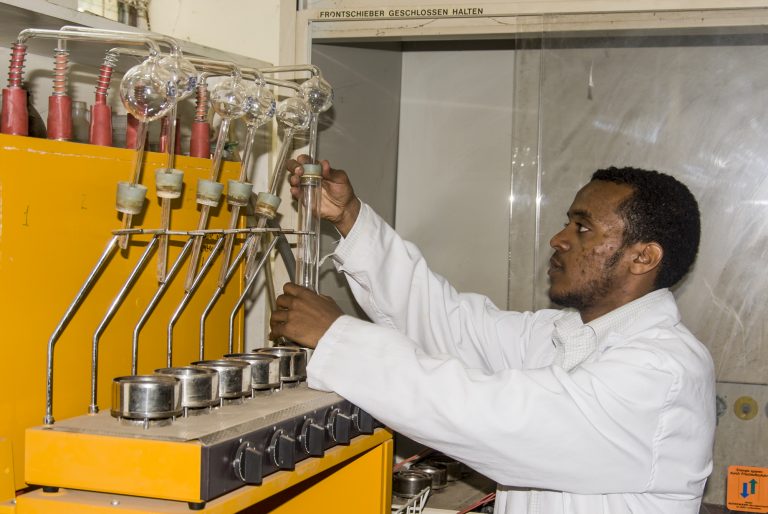
NWNL Is there progress among the Nile Basin riparian countries in coming to that agreement?
SEMU MOGES I don’t have much information on that, but I can say they have to agree on a model of what they want to go into an agreement. They have only few points to iron out. But, there is one sticking point that might be very crucial may not be disclosed at national levels, and only discussed at the political or administrative level. If you go to the Ministry of Federations, they might give you some clues on the sticking point.
NWNL I suppose one sticking point would be how to define what water security means. It seems that water security for Egypt would be different than water security for Ethiopia.
SEMU MOGES They have to reach agreement on around 33 articles. They are almost agreed, except one or two on water security. They haven’t found a mechanism or understanding of what water security means. Is water security based on securing previous claims, historic downstream rights of downstream rights, or new requirements of upper riparian countries.
NWNL Beyond the challenges of transboundary agreement and those associated “historical hitches”, what are the other two of the top three problems in today’s Blue Nile watershed?
SEMU MOGES The second – and the most challenging – issue for Ethiopia is climate variability, perhaps climate change. I cannot say which with certainty.
NWNL How would you describe today’s climate variabilities in the Blue Nile River Basin?
SEMU MOGES One variable we witness in the Blue Nile is unpredictable onset of rainfall that upsets farmers’ timing for plowing in June. If the rainfall is ten days late, it offsets agricultural schedules. Sometimes, in the middle of the growing season, there will be no rainfall for 14 or 15 days, yet crops can only withstand maybe less than 10 days of water shortage. There is also a high variability on the intensity of the rainfall as well as its duration. Climate variability issues here are particularly related to rainfall.
Rainfall variability is also compounded with the degradation of our soil. In the old days, even if we had erratic rainfall, it was okay because the soil was thick and fertile. Now, with severe erosion of soil, there is zero chance of moisture storage in the soil for extended period.
NWNL So, the deeper the topsoil, the more you can absorb the variability of rainfall.
SEMU MOGES Exactly, yes.
NWNL Have you been able to graph or record the data of the increased variability, changes and precipitation?
SEMU MOGES No, I have not. But many college studies have been conducted indicating there is a tendency toward increased variability of rainfall. Sometimes there is plenty of rainfall like last year, and yet today we are in a dry year. Therefore, annual variation, as well as seasonal variation, is always a problem. It has been an established fact that Ethiopia’s economic development is highly linked to the rainfall pattern.
I wish I could show you a published World Bank Report or a national report showing that when the rainfall is high, the economy is ticking. But when it is dry like this year, you see the economic development has been negative.
NWNL The World Bank has a report on that?
SEMU MOGES Yes, I have that report with a very established graph by David Grey, a technical advisor for banks and expert on water-source issues.
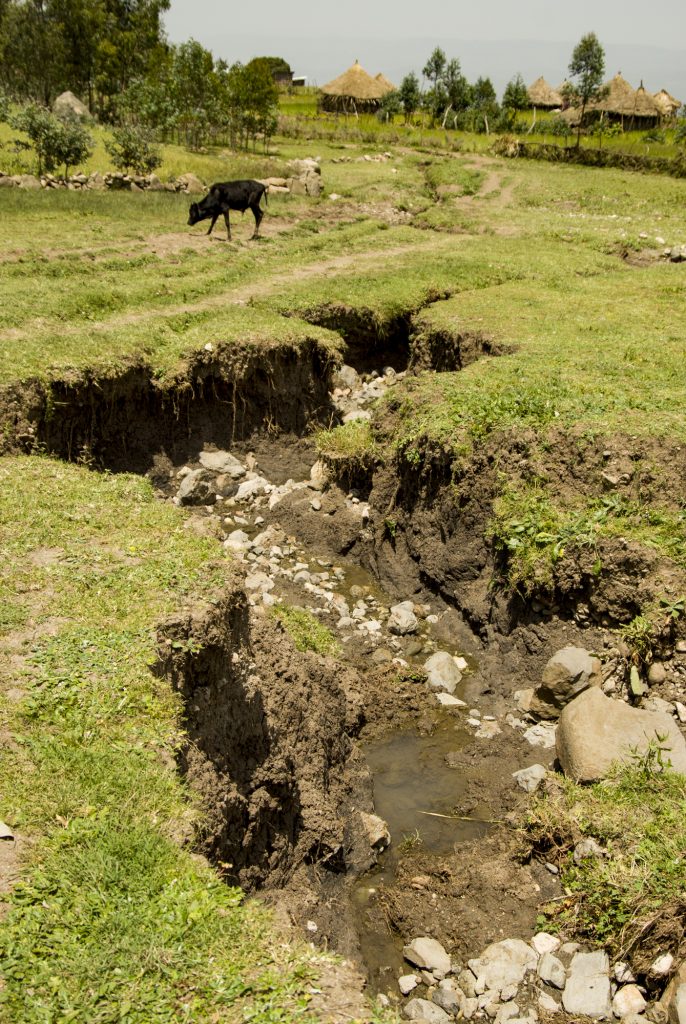
NWNL After transboundary disputes and climate change disruptions, what are the other big challenges in the Blue Nile River Basin?
SEMU MOGES The third challenging – problem for the country’s population is degradation.
NWNL Ah, yes, you’ve just mentioned the link between climate variability and soil degradation; and that topsoil being carried off by the rains into rivers causes erosion.
SEMU MOGES The other problem is a critical rise in our population. As I told you, the population in the Blue Nile is rising at a rate of 2.5 per capita, per year. You can see the farmers’ amount of land getting lower and lower per capital. Land forwarding to the next generation is getting lower and lower; and the people are getting poorer and poorer. The rise in population is related to the low productivity of land.
NWNL You explained that one solution to water allocation would be treaty countries sitting down and coming to riparian agreements. But what are the solutions to reducing topsoil loss? How do you compensate for climate change impacts, or help the farmers? How do you deal with the population issues that you just mentioned and low productivity?
SEMU MOGES As I have said, the economy in Ethiopia is both highly and linearly related to the rainfall variability. Therefore, a way to offset this variability of water availability would be one of the biggest solutions towards climate change adaptation.
NWNL Are you talking about ways to store water?
SEMU MOGES Yes, we need to store water for use during times of water shortages, dry seasons, or whenever there is variability in the expected rainfall patterns.
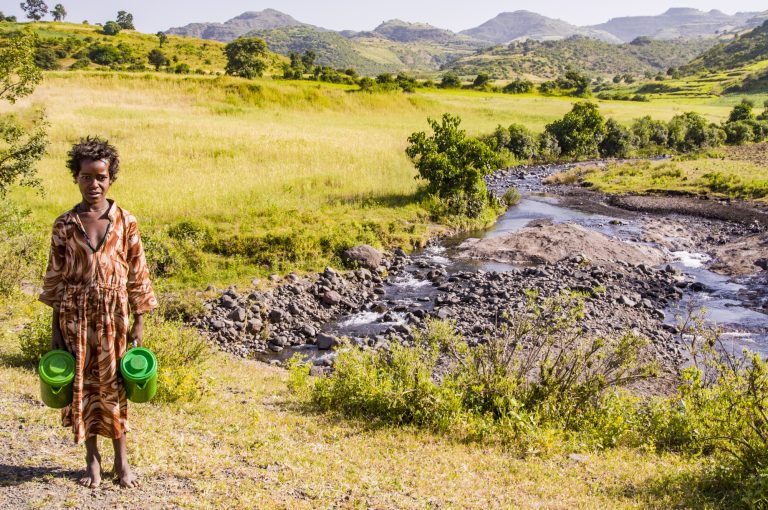
NWNL Are there any such water storage projects in the works now?
SEMU MOGES Yes, there are. The government has identified what we call “Growth Corridor Areas.” They are centered on water development.
NWNL How far along are those projects? When will they be ready to help the local people?
SEMU MOGE Well, this is up to the Ministry of Water Issues; but there is a high focus and acceptance by the Government of Ethiopia to pursue these Growth Corridors for water resource development. You develop them around the water resource. You develop the infrastructure. You develop market connections, and then you start the industry and linkage grows around it. Hopefully, this project will modernize the economy in the coming years, because government’s plan is to be a middle-income country in the coming years.
NWNL Is that a Millennium goal?
SEMU MOGE No, this goal goes beyond the Millennium. By 2020, the Ethiopian government desires to be one of the middle-income countries.
NWNL So, in order to become one of the middle-income countries, the water issues need to be resolved?
SEMU MOGE Yes, the central core of that plan is water. Water is food. Water is life. Of course, our ancestors and forefathers didn’t invest much in the water resource because fifty years ago the rain fell in predictable patterns and the soil was perfect. They did not have as many problems as we do now. The population was not rising as it is today. Now Ethiopia’s population doubles every 25 years. That is our paradox. Of course, you can imagine how much stress it puts on the country’s resources.
[Editor’s Note: In 2018 the World Bank reported Ethiopia had 109 million people. It was ranked as Africa’s the 2nd most populous nation and the region’s fastest growing economy. Yet a per capita income of only $790 made it one of the poorest countries in the region. Ethiopia’s readjusted goal to becoming a lower-middle-income country has been moved forward to 2025. Source: The World Bank in Ethiopia. ]
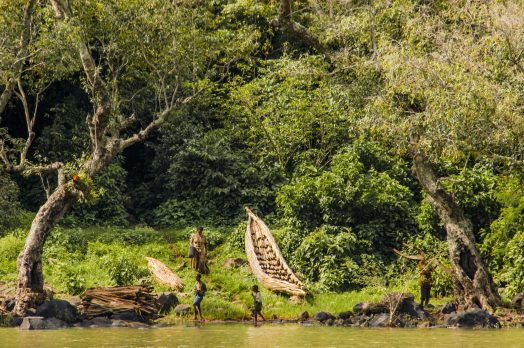
Posted by NWNL on February 3, 2020.
Transcription edited and condensed for clarity by Alison M. Jones.
All images © Alison M. Jones. All rights reserved.
